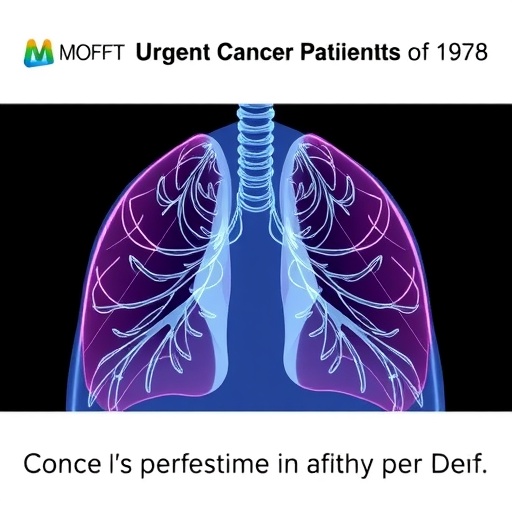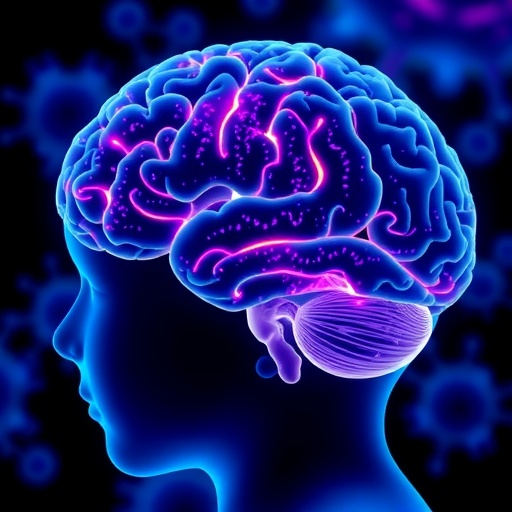BOSTON, Aug. 20, 2018 — The popularity of electronic cigarettes continues to grow worldwide, as many people view them as a safer alternative to smoking. But the long-term effects of e-cigarette usage, commonly called "vaping," are unknown. Today, researchers report that vaping may modify the genetic material, or DNA, in the oral cells of users, which could increase their cancer risk.
The researchers will present their results today at the 256th National Meeting & Exposition of the American Chemical Society (ACS). ACS, the world's largest scientific society, is holding the meeting here through Thursday. It features more than 10,000 presentations on a wide range of science topics.
"E-cigarettes are a popular trend, but the long-term health effects are unknown," says Romel Dator, Ph.D., who is presenting the work at the meeting. "We want to characterize the chemicals that vapers are exposed to, as well as any DNA damage they may cause."
Introduced to the market in 2004, e-cigarettes are handheld electronic devices that heat a liquid, usually containing nicotine, into an aerosol that the user inhales. Different flavors of liquids are available, including many that appeal to youth, such as fruit, chocolate and candy. According to a 2016 report by the U.S. Surgeon General, 13.5 percent of middle school students, 37.7 percent of high school students and 35.8 percent of young adults (18 to 24 years of age) have used e-cigarettes, compared with 16.4 percent of older adults (25 years and up).
"It's clear that more carcinogens arise from the combustion of tobacco in regular cigarettes than from the vapor of e-cigarettes," says Silvia Balbo, Ph.D., the project's lead investigator, who is at the Masonic Cancer Center at the University of Minnesota. "However, we don't really know the impact of inhaling the combination of compounds produced by this device. Just because the threats are different doesn't mean that e-cigarettes are completely safe."
To characterize chemical exposures during vaping, the researchers recruited five e-cigarette users. They collected saliva samples before and after a 15-minute vaping session and analyzed the samples for chemicals that are known to damage DNA. To evaluate possible long-term effects of vaping, the team assessed DNA damage in the cells of the volunteers' mouths. The researchers used mass-spectrometry-based methods they had developed previously for a different study in which they evaluated oral DNA damage caused by alcohol consumption.
Dator and Balbo identified three DNA-damaging compounds, formaldehyde, acrolein and methylglyoxal, whose levels increased in the saliva after vaping. Compared with people who don't vape, four of the five e-cigarette users showed increased DNA damage related to acrolein exposure. The type of damage, called a DNA adduct, occurs when toxic chemicals, such as acrolein, react with DNA. If the cell does not repair the damage so that normal DNA replication can take place, cancer could result.
The researchers plan to follow up this preliminary study with a larger one involving more e-cigarette users and controls. They also want to see how the level of DNA adducts differs between e-cigarette users and regular cigarette smokers. "Comparing e-cigarettes and tobacco cigarettes is really like comparing apples and oranges. The exposures are completely different," Balbo says. "We still don't know exactly what these e-cigarette devices are doing and what kinds of effects they may have on health, but our findings suggest that a closer look is warranted."
A press conference on this topic will be held Tuesday, August 21, at 11 a.m. Eastern time in the Boston Convention & Exhibition Center. Reporters may check-in at the press center, Room 102 A, or watch live on YouTube http://bit.ly/ACSLive_Boston2018. To ask questions online, sign in with a Google account.
The researchers acknowledge support and funding from the University of Minnesota.
###
The American Chemical Society, the world's largest scientific society, is a not-for-profit organization chartered by the U.S. Congress. ACS is a global leader in providing access to chemistry-related information and research through its multiple databases, peer-reviewed journals and scientific conferences. ACS does not conduct research, but publishes and publicizes peer-reviewed scientific studies. Its main offices are in Washington, D.C., and Columbus, Ohio.
To automatically receive press releases from the American Chemical Society, contact [email protected].
Note to journalists: Please report that this research was presented at a meeting of the American Chemical Society.
Follow us: Twitter | Facebook
Title
Integrating multi-"omics"- mass spectrometry-based methods to characterize electronic cigarette exposure in humans
Abstract
Characterizing chemical exposures in humans remains a significant challenge. Our lab has been developing state-of-the-art high-resolution mass spectrometry-based methods to characterize the exposome and determine how it may influence overall health. Because it is challenging to capture the complexity of exposures, often at trace levels, improved tools are needed to move this field of research forward. We have recently developed a neutral loss (NL) screening and relative quantitation strategy for the targeted analysis of reactive carbonyls in biological fluids. In addition, a comprehensive DNA adductomics approach was developed to characterize covalent modifications in DNA generated from these exposures. Here, we have integrated these MS-based methods to characterize electronic cigarette exposure in humans, with the goal of identifying reactive carbonyls generated during vaping and the corresponding DNA adducts formed in the oral cavity. Human saliva and oral cell samples from e-cigarette users (n=10) and non-user controls (n=10) were obtained to screen reactive carbonyls and DNA adducts. Reactive carbonyls in saliva were derivatized with 2,4-dinitrophenylhydrazine to form hydrazones and analyzed by the NL screening method. Likewise, DNA from oral cells were isolated, hydrolyzed to nucleosides, and analyzed by both targeted and non-targeted DNA adductomics approaches. Using the NL loss screening strategy, increased levels of acrolein, methylglyoxal, and formaldehyde were observed after vaping, while the levels of acetaldehyde and glyoxal vary within subjects possibly due to variations in composition of the e-liquid used. This information was then used to develop targeted and non-targeted DNA adductomics approaches to monitor the corresponding DNA adducts in oral cells of e-cigarette users. Our results showed increased levels of acrolein-derived DNA adducts, in particular, gamma-OH-Acro-dG in e-cigarette users compared to non-users. We are currently investigating other DNA adducts that might be relevant to e-cigarette exposure using non-targeted DNA adductomics approaches and expanding our analysis to a larger sample size.
Media Contact
ACS Press Center in Boston, Aug. 19-22
617-954-3960
[email protected]
Katie Cottingham, Ph.D.
301-775-8455
[email protected]




